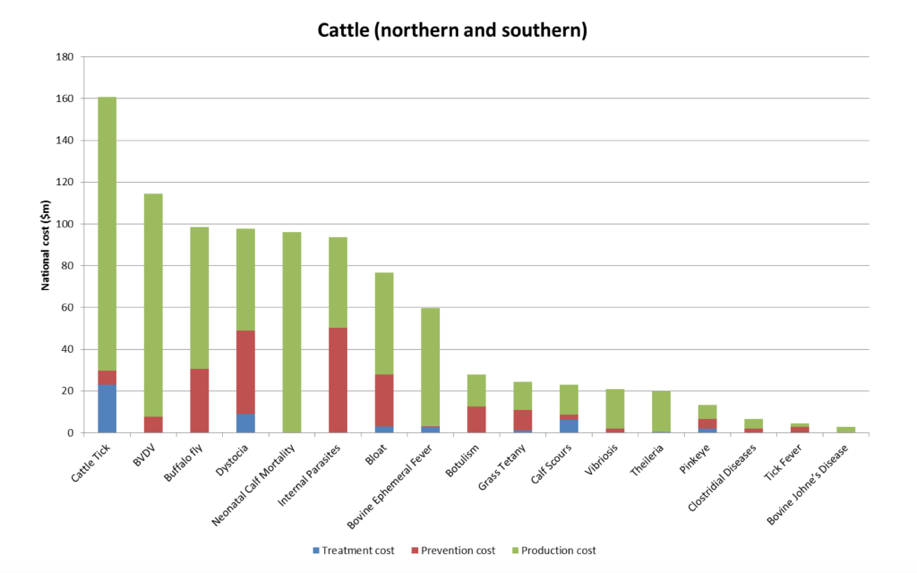The current COVID-19 pandemic made evident to all that Health is linked to Economy with tighter links than we might think. Health is not the power drainer of national budgets worldwide; it is also the stabilizer of economic growth and abundance. It is a reciprocal equation and is not only limited to humans. A deadly herd epidemic is enough to devastate a nation’s economy for years; an infected grooming product is enough to bring down big economic giants; a food poisoning can defame a large food chain and result in huge pay-outs.
For decades Health has been the big burden of Economy and analysts have been searching for ways to cut down on the expenses without compromising quality. Last few years they realized that Prevention has a bigger impact on cost-effectiveness than Cure. Nations and private insurance companies have started to implement Prevention. Early Prevention necessitates accurate and fast identification of the causative and quick action to its containment. Therefore, prevention, when pathogens are concerned, cannot exist without efficient and continuous monitoring and testing.
Hospitals and Health Care
A big concern in health care is the drug-resistant pathogens that emerge from erroneous use of antibiotics, when the pathogen has not been identified. Self-home medication as well as ample use of generic antibiotics, while waiting for lab report on the infection, drive pathogens to devise mechanisms to tackle the drug. The slow classic microbiological methodology, mainly culture, accounts for the physicians’ eagerness to use broad range antibiotics.
The Review on Antimicrobial Resistance under the auspice of the UK Department of Health predicts that the global cost from antibiotic resistance infections will amount to $100 trillion by 2050
Another plague for Hospital care is the Hospital Acquired infections (HAIs), not only because they burden already weak patients but because they are caused by pathogens resistant to drug therapy.
In the USA, 1 out of 31 patients has had an infection associated with their hospitalisation, according to CDC.
This fact translates to $96-$1147 billion in direct and indirect costs for USA hospitals and an average $10,375 additional hospital related costs/patient. Moreover, patients with HAIs have 3.3 days longer stay in the hospital that affects their ability to resume work, adding more to the overall cost to society.
Livestock Infections
A comprehensive Australian report lists 17 cattle, 23 sheep and 9 goat diseases most of which are caused by pathogens. Figure 1 shows how much money prevention costs (red) compared to treatment (blue) in respect to the total cost of production. In all cases the prevention cost is, by far, less than the cost in production.

Figure 1. Diseases for cattle in Australia in terms of treatment, prevention and overall cost
Food Industry
Food poisoning caused by pathogens is also a major health issue. According to WHO, 1 in 10 people fall ill because of food poisoning and 137,000 die each year due to foodborne diseases, especially children. The main causatives are norovirus, Campylobacter, non-typhoidal Salmonella and pathogenic E. coli, while other pathogens such as typhoid fever, hepatitis A, Taenia solium (a tapeworm), and aflatoxin (produced by mold on grain that is stored inappropriately) have a substantial share.
It is estimated that 33,000,000 years are lost yearly by food poisoning due to pathogens.
Not only fresh and undercooked food have a history of food poisoning but also canned food has been implicated in food poisoning outbreaks, such as the 2015 home-canned potatoes botulism outbreak in Ohio, USA.
Pharma Industry
The sterility testing is ensuring the quality of pharmaceutical products, either drugs or devices. The specific market is growing, as the need for more top-level sterile products is increasing. In 2017 the total bioburden/biotoxin testing was more than half of the total testing in this sector as seen in Figure 2.3.


How can Fast Microbiological Methods reduce Prevention costs?
It is especially important to recognize an infection quickly and identify the responsible pathogen. If we are talking about human infections, then quick-acting means effective treatment with lower doses and reducing the possibility of systemic infection (e.g., sepsis) or wrong treatment. Timely infection recognition in livestock can reduce the general spread within the herd, reducing the cost in production and treatment. Effective infection monitoring in food production, cosmetics and other consumables can prevent food poisoning, allergic reactions, massive population infection. Pharma production needs constant sterile environment to reach the high-quality standards needed. In all those cases, robust, high throughput, dependable techniques are needed to ensure timely intervention, quality of production and good resource usage with minimal cost.
Micronbrane Medical provides easy and rapid solutions with two products: Devin® and PaRTI-Seq® (Pathogen Real-Time Identification by Sequencing). Devin® membrane produces pathogen-enriched samples ready for downstream diagnostic applications. PaRTI-Seq® technology combines the latest third-generation sequencing (Nanopore Sequencing) and proprietary analytical methods, to provide test results within 22 hours.
References
- O’Neil J. Tackling Drug-Resistant Infections Globally: Final Report and Recommendations. The Review on Antimicrobial Resistance; 2016. Accessed June 23, 2021. https://amr-review.org/sites/default/files/160525_Final%20paper_with%20cover.pdf
- CDC’s National Center for Emerging and Zoonotic Infectious Diseases, Division of Healthcare Quality Promotion staff. 2018 National and State Healthcare-Associated Infections Progress Report.; 2020. Accessed June 23, 2021. https://www.cdc.gov/hai/data/archive/2018-HAI-progress-report.html
- Dellow P. Priority List of Endemic Diseases for the Red Meat Industries. Meat & Livestock Australia Limited; 2015:282.
- WHO. WHO’s first ever global estimates of foodborne diseases find children under 5 account for almost one third of deaths. Accessed June 23, 2021. https://www.who.int/news/item/03-12-2015-who-s-first-ever-global-estimates-of-foodborne-diseases-find-children-under-5-account-for-almost-one-third-of-deaths
- Gaudin V. Advances in biosensor development for the screening of antibiotic residues in food products of animal origin – A comprehensive review. Biosens Bioelectron. 2017;90:363-377. doi:10.1016/j.bios.2016.12.005
- Vidic J, Chaix C, Manzano M, Heyndrickx M. Food Sensing: Detection of Bacilluscereus Spores in Dairy Products. Biosensors. 2020;10(3):E15. doi:10.3390/bios10030015
